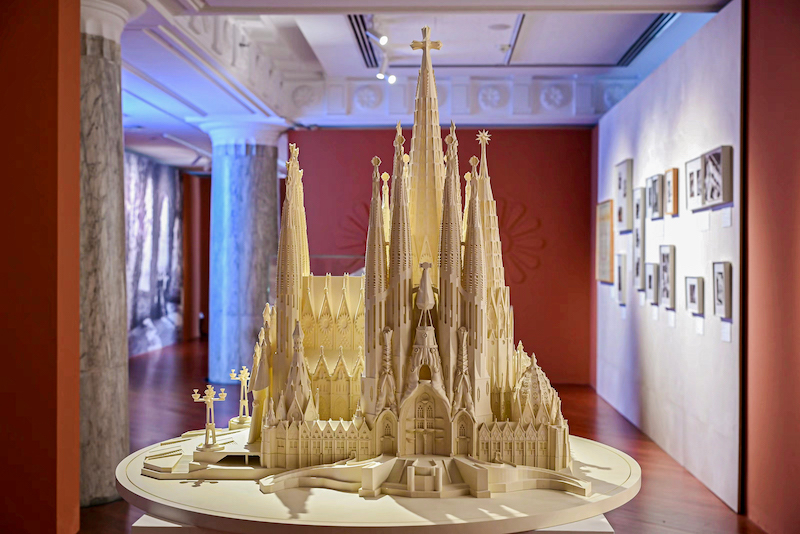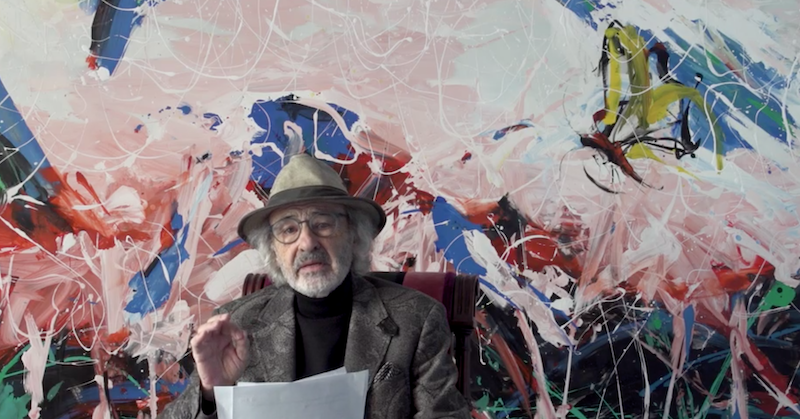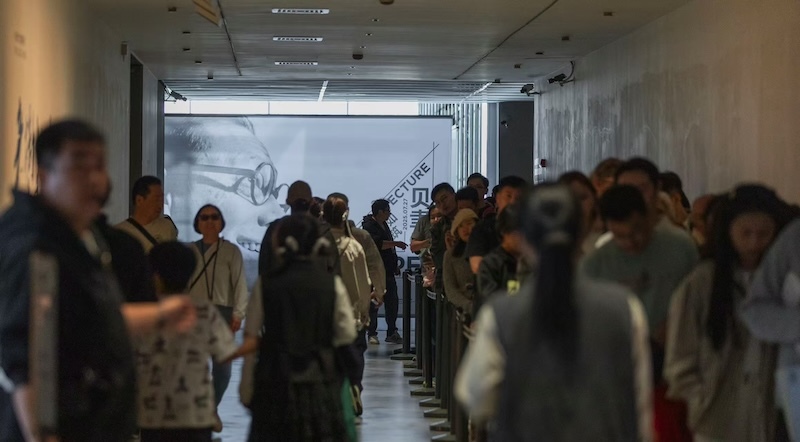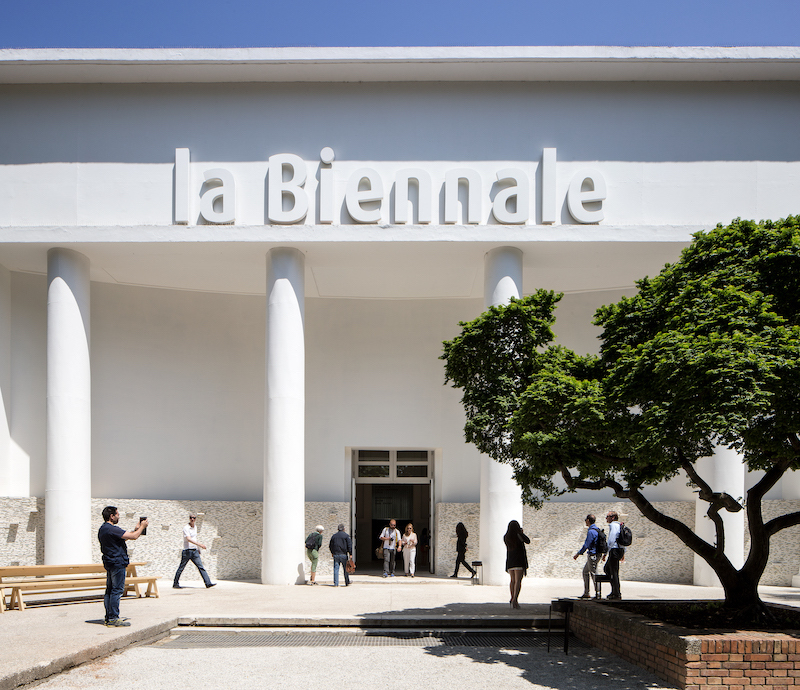
Antoni Gaudí (1852-1926) is a highly creative genius in the history of world architecture. His works are known for their naturalism, curved aesthetics and structural innovation, and have been listed on the World Heritage List.
Recently, the Gaudi joint exhibitions: "Splendour Returns to Simplicity - Gaudi and His Times" and "The Joy of Things - The Voice of Gaudi" were respectively exhibited at Shanghai Jiushi Art Space and Jiushi Art Salon. On the occasion of the opening of the exhibition, The Paper Art Review interviewed the curators, Jules Bravo Farre, a tenured professor at the Polytechnic University of Catalonia in Spain, and Josep Cerda, a professor at the Faculty of Fine Arts of the University of Barcelona and a sculptor.
"Nature, art and local culture, we can summarize Gaudí in three words," said Farrell.
Different from the usual architectural exhibitions that focus on models, the "Gaudí and His Times" exhibition at Jiushi Art Space and the "Voice of Gaudí" exhibition at Art Salon focus more on historical documents and the cultural connotations behind the buildings. The former presents Gaudí's architectural design and evolution through architectural components, historical photos, work manuscripts, video records and documentary materials, while the latter tells the audience the voice of Gaudí's hometown through "sound sculptures".

Exhibition View
At the same time, the craftsmanship and artisans of Catalonia, Gaudí's hometown, are also important elements that connect the two exhibitions. Gaudí sees architecture as an organic organism of precise collaboration, and he sees artists and craftsmen as indispensable and important organs in architecture. He created a craftsman utopia that opposes efficiency, and he embraces the creative ecological concept of multiple skills. At the end of the exhibition, there is a sentence that summarizes the triple essence of the birth of Gaudí's architecture: emotion is the soil, collaboration is the root system, and time will make the seed grow into what it should be.

gaudi

Jules Bravo Farre, professor at the Polytechnic University of Catalonia (right) and Josep Cerda, professor at the Faculty of Fine Arts of the University of Barcelona and sculptor (left)
Dialogue|Farley & Zelda
The Paper: Shanghai presents two Gaudi-themed exhibitions, "Splendour Returns to Simplicity: Gaudi and His Times" and "The Joy of Things: The Voice of Gaudi". Can you talk about how the two exhibitions interpret the architect Gaudi from different perspectives?
Farley & Cerda: Nature, art and local culture, we can summarize Gaudí in three words. For Gaudí, nature, faith and philosophy are inseparable. He believes that the best way to understand nature is through nature. The architectural style and art he created can be appreciated by the whole world.
The exhibition "Gaudí and His Time" leaves us with an unimaginable and desirable space and time. People today have a great interest in Gaudí's works because they are changing their understanding of the relationship between man and nature and our way of life. As a university research institution for Gaudí's art and philosophy, we explain and express it through our understanding and yearning for Gaudí. The exhibition presents historical research objects related to Gaudí to help the audience enter Gaudí's world. At the same time, our team did not use computers, mathematics, or any analytical methods, but relied on our hands and years of experience in Gaudí's architectural research to restore and create the catenary arch art installation of the Sagrada Familia. This work will continue to be preserved.

Gaudí conducts structural strength tests on the lower floors of the Sagrada Familia

Gaudí with students from the School of Architecture, photo by Richard Opisso
The main theme of the "Voices of Gaudí" exhibition is the "sounds" that Gaudí listened to and was deeply influenced by since childhood. These sounds shaped his perception and expression of the world. Riudoms is Gaudí's hometown, located in a core area of Europe that is very representative of geography and culture. If Riudoms is the center of the circle, 12 kilometers away is Montroig, the birthplace of contemporary art master Joan Miró. Miró and Gaudí have a common family background - their ancestors were all engaged in metal crafts. Another 25 kilometers away is San Juan Horta, where Pablo Picasso used to escape the summer heat and was inspired by his creations. Not far away is the birthplace of Salvador Dali. The surrealist master had great respect for Gaudí and regarded him as a soul mate.

Exhibition site, old photos of Gaudi’s former residence
The art installations presented in this exhibition were created by the exhibition's co-curator, professor at the University of Barcelona and sculptor Josep Cerda. He was born just a few kilometers away from Gaudi's hometown, so what is presented in the exhibition is not an indirect understanding from books, but a life experience rooted in the land and full of personal experience. This is a spiritual resonance in a unique regional context, and also an artistic memory shared on the land of Catalonia.
The Paper: How did Gaudi’s designs draw inspiration from nature?
Farley & Cerda: "We are part of nature", this cognition has shaped Gaudí's way of thinking. He observed the trees, flowers, rivers, sea and animals in his hometown and expressed them in architecture through art.
For example, the structure of the Sagrada Familia is similar to the way trees grow; the wind-eroded appearance of the caves in Gaudi's hometown became the source of structural inspiration for Casa Milà; the ironwork of the balcony is related to the natural state of plant vines, and the roof seems to be the traces left by waves on the beach.

Old photos of Casa Mila

Ironwork on the balcony of Casa Mila
The Paper: The highlight of the exhibition is the original relief proof of the Annunciation scene, which is also the initial form model of the Sagrada Familia's facade design. After that, what other facade patterns did Gaudí design for the Sagrada Familia? What are the connections between these patterns?
Farrell & Cerda: This relief was created by Gaudí's team, not Gaudí himself. Gaudí's achievements are due to his friends, confidants and partners, just as the creation of the Sagrada Familia incorporates a lot of Gaudí's collaboration with sculptors. In this exhibition, we will also explain this history to the audience.

The original relief proof of the Annunciation scene at the exhibition site

Models pose between mirrors for a sculpture at the Sagrada Familia
The Paper: The replica of the "Bag Catenary Arch" in the exhibition tells the story of Gaudí's important discoveries in mechanics when designing the Sagrada Familia. Can you talk about this technology and its significance for subsequent architectural design?
Farley & Cerda: As mentioned before, our team did not use computers, mathematics, or any analytical methods. We relied on our hands and years of experience in studying Gaudi's architecture to restore and create the catenary arch art installation of the Sagrada Familia. What is displayed here is not technology, but art and philosophical thought. We think about architecture from another perspective, think about the relationship between man and nature, and seriously think about the essential purpose of current social construction and development, that is, man and nature.

Historical Analysis and Photographic Study of the Sagrada Familia
The Paper: The exterior walls of Gaudí's early work, the House of Imagination, were covered with floral glazed tiles. Later, he also used collage decorations such as ceramic tiles and glazed tiles in many of his architectural designs, which became a major feature, such as the collage elements in Park Güell. What inspired Gaudí to use this method to decorate buildings?
Farrell & Cerda: In fact, the broken porcelain and collage elements in Park Güell originated from Gaudí's partner, artist Jujol, who accidentally broke a disk during a lunch and brought the broken disks to the construction of Park Güell, thus creating a visual image of great architectural art. This was confirmed by Jujol's son, Jujol II, the honorary dean of the "Gaudí and Jujol" Art and Design Research Center at the Polytechnic University of Catalonia. This story also originated from nature and human social life, and truly expressed the relationship between naturalism and society.

The exhibition site, floral glazed bricks on the exterior wall of the “Fantasy House”

Park Güell Manuscript, José Jujol Manuscript Collection
The Paper: In the design of some patterns, Gaudi also borrowed some oriental elements, such as the image of the dragon. Can you talk about how Gaudi viewed and used different cultures and patterns?
Farley & Cerda: To understand Gaudí, we cannot ignore his deep friendship with his childhood friend Eduard Toda. The two studied together and their friendship lasted a lifetime. Toda was the Spanish Consul General in Shanghai and often sent letters and photos of China to Gaudí. He was well versed in archaeology and Chinese culture, and he also told Gaudí about the symbol of "dragon" in China.

Edward Toda & Josep Rivera, Joker Magazine
Coincidentally, the dragon also occupies an important position in Catalan folk culture and is a frequently appearing symbol. For example, in the traditional Catalan commemorative event "Fire Dragon Show", every small town in Catalonia has its own "dragon". These historical memories, thoughts, and unique expressions have become creative elements in Gaudí's architecture and a witness to the mysterious resonance between the East and the West.

Image of a dragon in Park Güell

Ciutadella Park
The Paper: What influence did the local culture and customs of Catalonia have on Gaudí? How can we see this?
Farrell & Zelda: Gaudi had a deep affection for his hometown and spent the most important time of his life there. The identity of his grandfather and father as copper utensil craftsmen and the unique natural elements of his hometown have all become the life elements of Gaudi's creations, such as the relationship between the facade of Casa Milà and the Red Mountain in Gaudi's hometown.

At the "Voice of Gaudí" exhibition, images show the relationship between the facade of Casa Milà and Gaudí's hometown, Monte Rosa

At the "Voice of Gaudí" exhibition, images show the relationship between the tower shape of the Sagrada Familia and the "fire dragon" tower, a traditional activity in Gaudí's hometown
The Paper: The exhibition presents some artifacts from Gaudí's former residence, as well as some handicrafts. How did Gaudí collaborate with artists and craftsmen to participate in architectural design?
Farrell & Cerda: Gaudi’s grandfather and parents were traditional Catalan copperware craftsmen. Therefore, manual craftsmanship and understanding of the shaping of tools, including the time spent on the craftsmanship and the choice of craft materials, are very important. This is also the source of Gaudi and his team’s craftsmanship and artistic creation. In architecture, sculpture, art and materials, they share a common Catalan cultural tradition. The original stained glass windows, reliefs, and local stones on display in the exhibition all contain Catalan craftsmanship.

Gaudí's studio at the Sagrada Familia

Sculpture of Saint Barnabas
Sculptor Lorenz Matamara, a childhood friend and collaborator of Gaudí, led the Sagrada Familia team of sculptors who created most of the sculptures on the Nativity facade. After Lorenz, his son Juan Matamara inherited his father's work and completed the remaining sculptures on the Nativity facade of the Sagrada Familia. Juan also collected important documents and photo archives about Gaudí and donated them in 1972. Juan Munet is a cabinetmaker who collaborated with Gaudí many times and created benches, confessionals and cabinets for worship items for the basement of the Sagrada Familia.
The Paper: What do you think of Gaudi’s architectural aesthetics? What influence has he had on later generations?
Farley & Cerda: The aesthetics of his architecture is the resonance between man and nature. Gaudi's way of thinking is to think like nature. His philosophy is a philosophy that is closely connected with nature, whether in architectural design or in daily life. This is also similar to some Chinese philosophical thoughts. He has an important influence on philosophical thoughts and artistic thinking.
The Paper: Nowadays, many people come to Barcelona to see Gaudi’s architectural designs. Can you talk about the importance of Gaudi to Barcelona?
Farrell & Cerda: Whether in economic development or cultural exchange, Gaudi is one of the elements that make Barcelona a world-famous tourist city. In 2026, on the 100th anniversary of Gaudi's death, the World Congress of Architects will also be held in Barcelona.

Sagrada Familia is under construction and will be completed in 2026
The Paper: Can you talk about the new progress and breakthroughs in Gaudi research in recent years?
Farrell & Cerda: The Polytechnic University of Catalonia is a research institution for Gaudí’s culture and art. In recent years, it has made great contributions to cultural research, artistic thinking and architectural technology innovation, such as energy-saving building research, art and design philosophy. In 2017, the RCR design team taught at the Polytechnic University of Catalonia won the Pritzker Architecture Prize for its application and expression of nature, local and architectural design.
In the exhibition of Gaudí, Dr. GAOLILI, the head of the "Gaudí and Juru" art and design research project, and Zhou Jie, a scholar of Gaudí culture and art research, participated in the exhibition. Together with a joint research team from the Polytechnic University of Catalonia, the University of Barcelona, the Gaudí House Museum, and the Tarragona Museum of Modern Art, they built the most comprehensive Gaudí art and design exhibition to date.
The exhibition "Splendour Returns to Simplicity - Gaudi and His Times" will be on display until October 8. (Location: Jiushi Art Space, No. 18, The Bund)
The exhibition "The Joy of Things - The Voice of Gaudi" will be on display until October 8. (Location: Jiushi Art Salon, No. 230 Beijing East Road)


